A dog might be man’s best friend, but taking a picture of a dog can be like trying to catch a squirrel! Dogs love to play and run around, so snapping a perfect shot can be tricky, but there’s no need to worry.
Dogs make really cute and funny expressions, and they will never criticize you for making their nose look big! However, capturing a sharp, well-composed snapshot of your best friend isn’t always as simple as “Sit! Stay!” Here are a few tips from our friends who have photographed more than 25,000 dogs (that must be some record, right?).
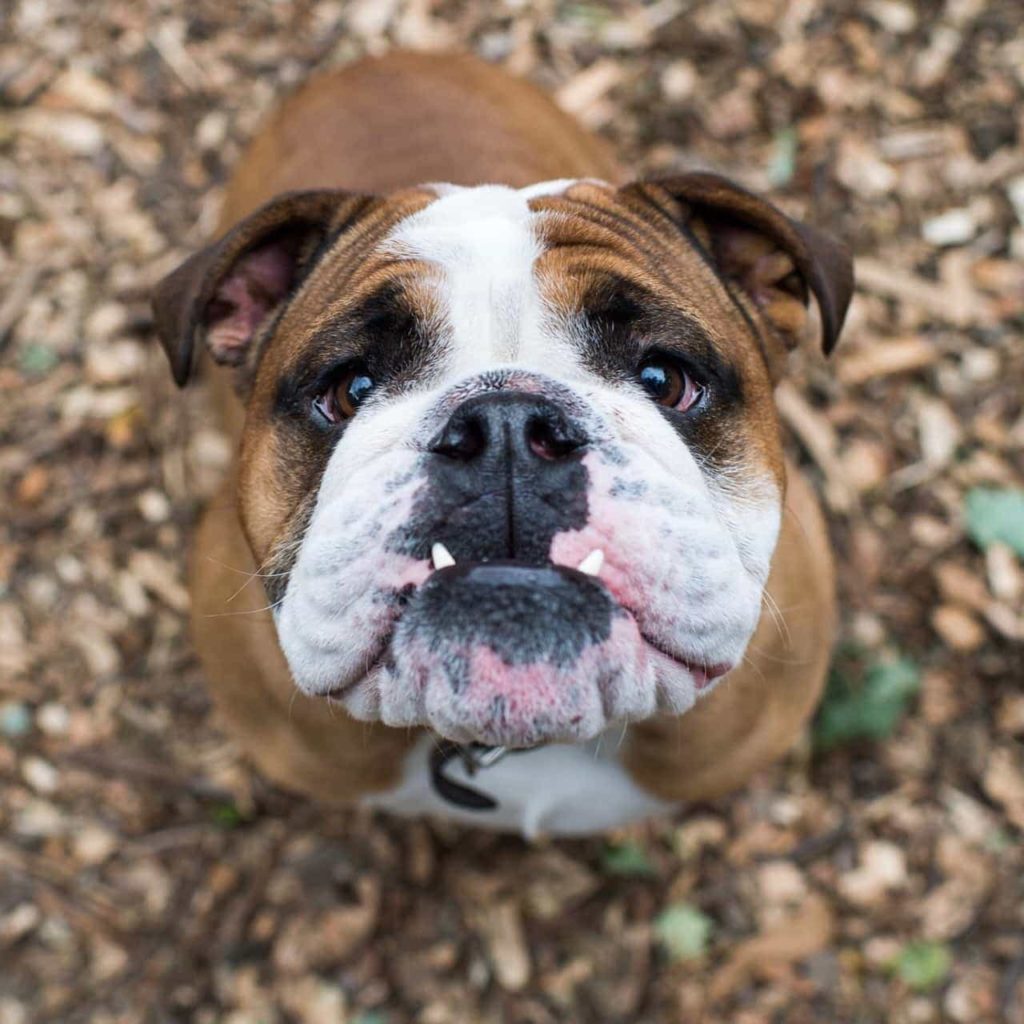
Light Will Guide You
Before anything, make sure the light is good. You can’t make great images without great light. “If the light isn’t right, we’ll usually leave the cameras behind,” said John Wingfield from Millie the Golden.
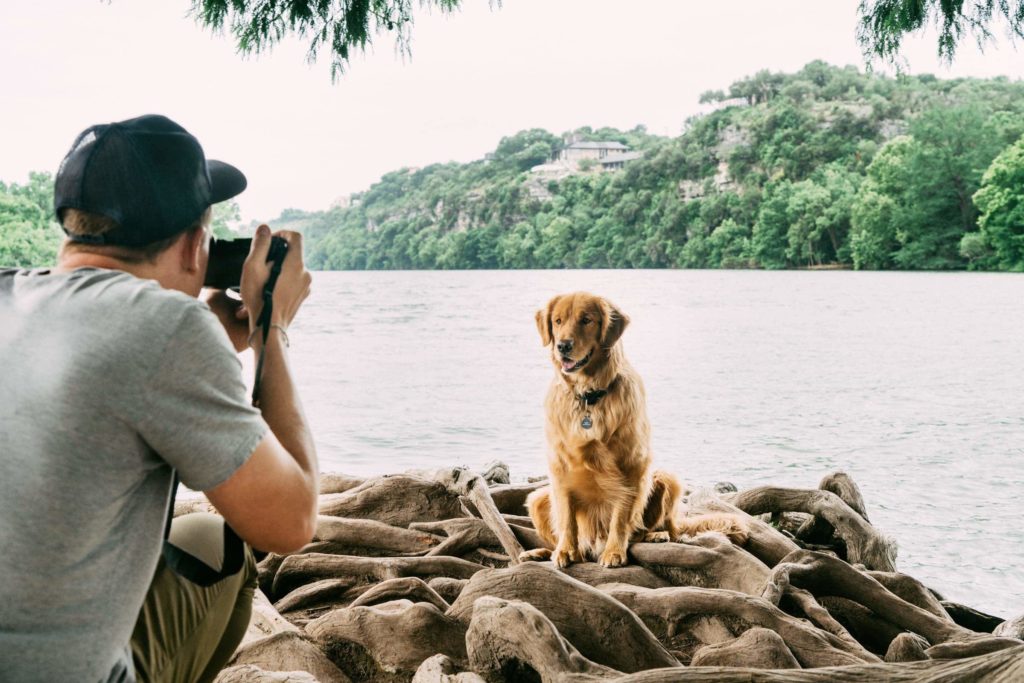
Aspen is a huge fan of the outdoors. Hunter (the photographer in the photo above) is as well, so they always love taking pictures of Aspen in nature. Finding a pretty background, whether it be mountains or a river, is always a plus. Hunter tries to capture Aspen in an organic way so that the photo doesn’t seem forced. For example, if they are already heading up to the mountains for the day, they might stop and take a break somewhere while letting Aspen run around and just take a shot of him in the moment. These tend to be the best images.
Also, try to use natural light as much as possible. If you are photographing inside, make it work by utilizing the light from windows.
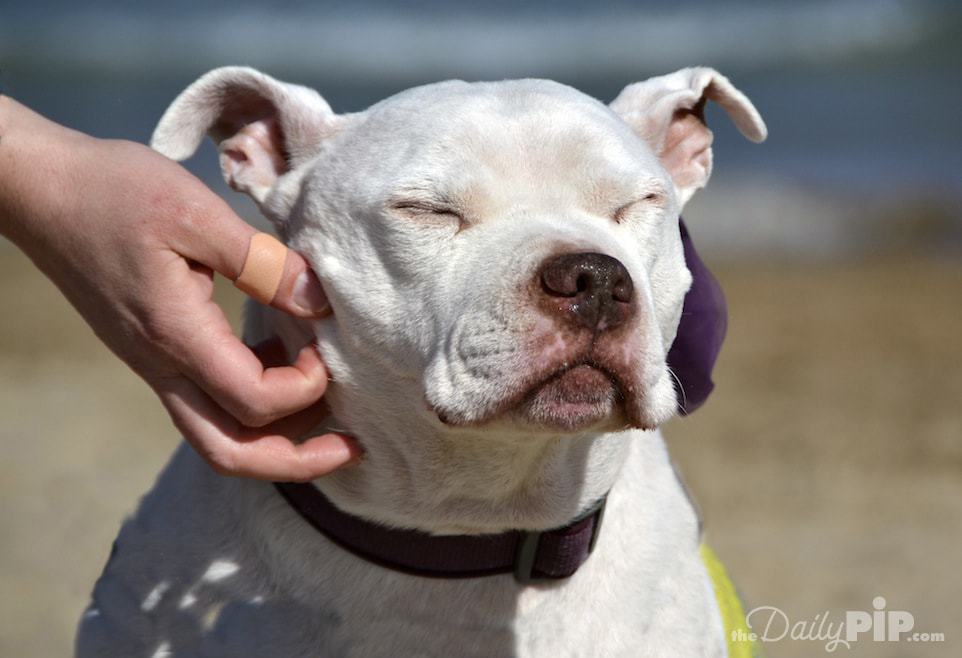
Keep the Talent Happy
Kristin Avery from The Daily Pip suggests spending time with the animals before pulling out your camera. Dogs always take a bit longer than people.
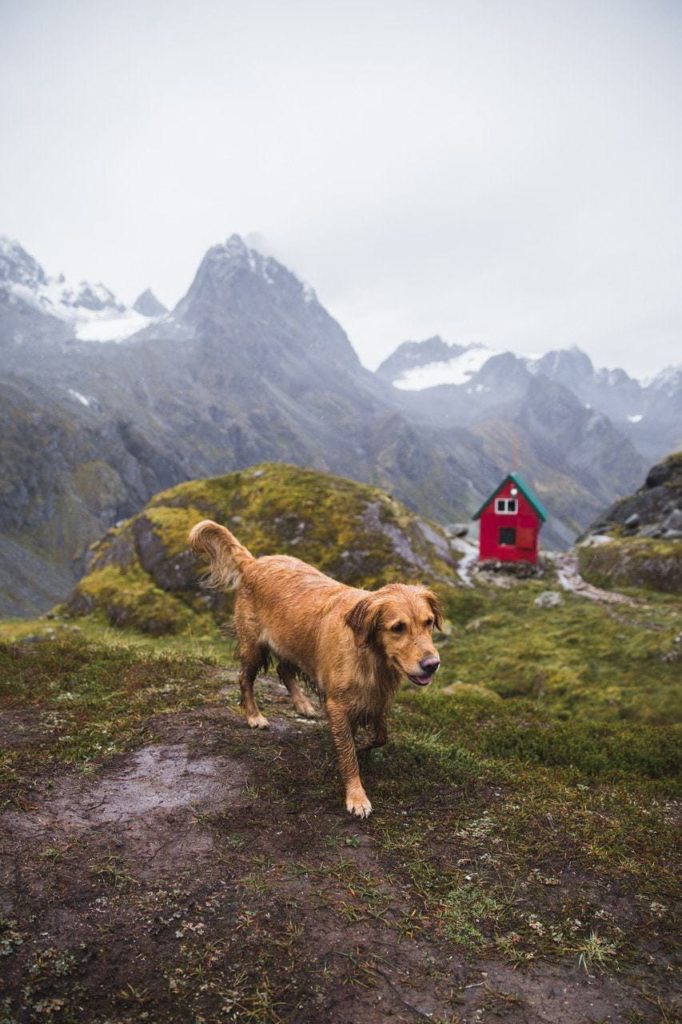
It’s also important to make sure you have something they want. Whether it’s food or their favorite toy (squeakers work great), Elias Weiss Friedman from The Dogist recommends moving whatever it is around the lens. Try moving it quickly from the ground to the camera to get them excited about it, and don’t forget to reward them before, during, and after for their cooperation.
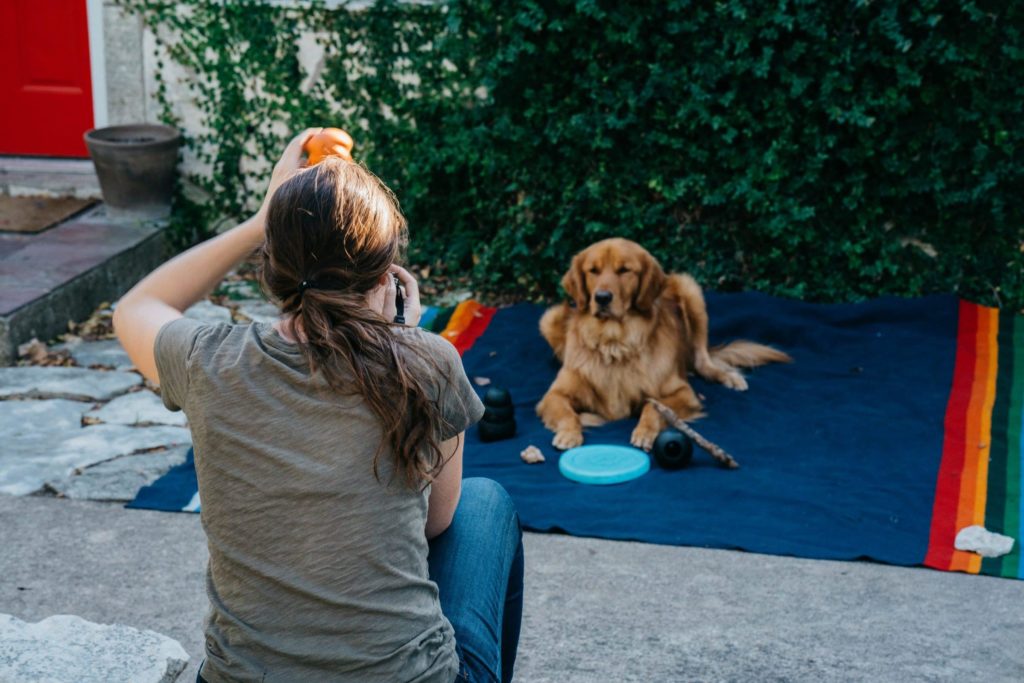
Sara (the photographer in the photo above) from Aspen the Mountain Pup also finds it helpful to use a toy or some kind of stick or rock when trying to get Aspen to look right at the camera. They don’t always need one, but when they do, it can be a real lifesaver. Don’t worry, they always give it to him to play with afterward.
Be patient. Sometimes your dog may be overly excited at first. Friedman finds that if you wait it out for a few minutes, they get a little tired and will sit still for long enough to get the perfect shot.
Also, try making weird noises. To get different expressions, make noises that they’ve never heard or that mimic a dog. A puppy whine works great!
Don’t forget to reward them. Give them the cookie or the toy you’ve been taunting them with. They’ll get frustrated and won’t cooperate next time if you withhold their reward.
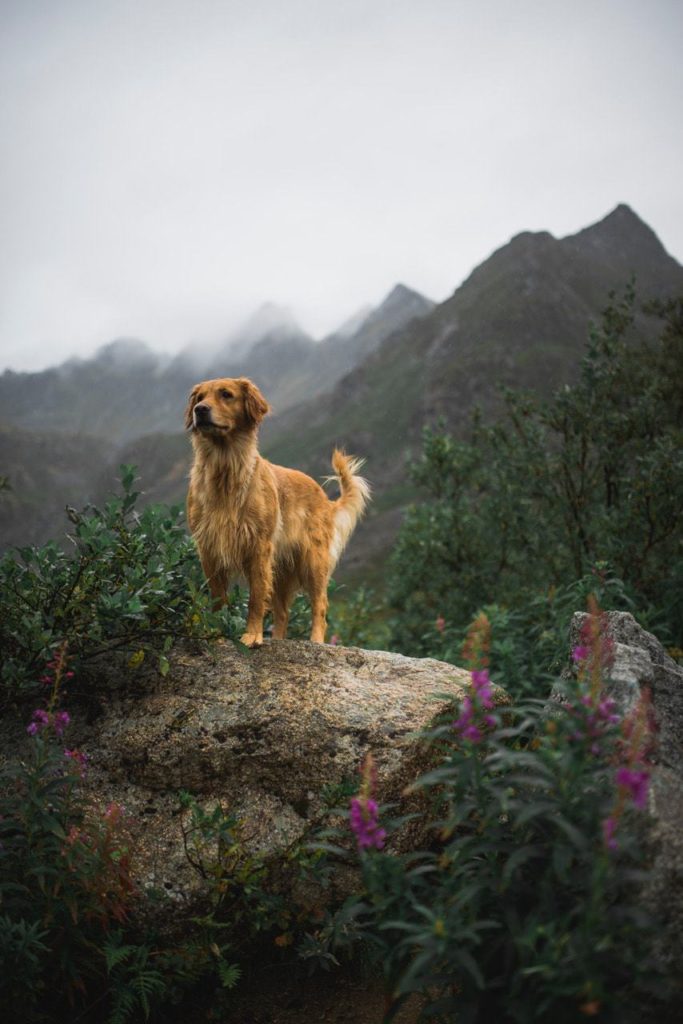
Angles in the Outfield
There are several angles from which to actually take the photo. We recommend you test them all.
Get down low for the pet’s point of view. “The best perspective is their perspective. I wear knee pads every day!” Friedman said.
Avery suggests photographing animals from just slightly below. This angle often helps you capture their eyes. It will also make them feel more comfortable, which in turn will make for better shots. If animals are small, place them up on something.
Have a decent zoom lens so you don’t have to be right in their face. “I specialize in rescue animals. Many are nervous with new people so it’s especially important to make them comfortable,” Avery said.
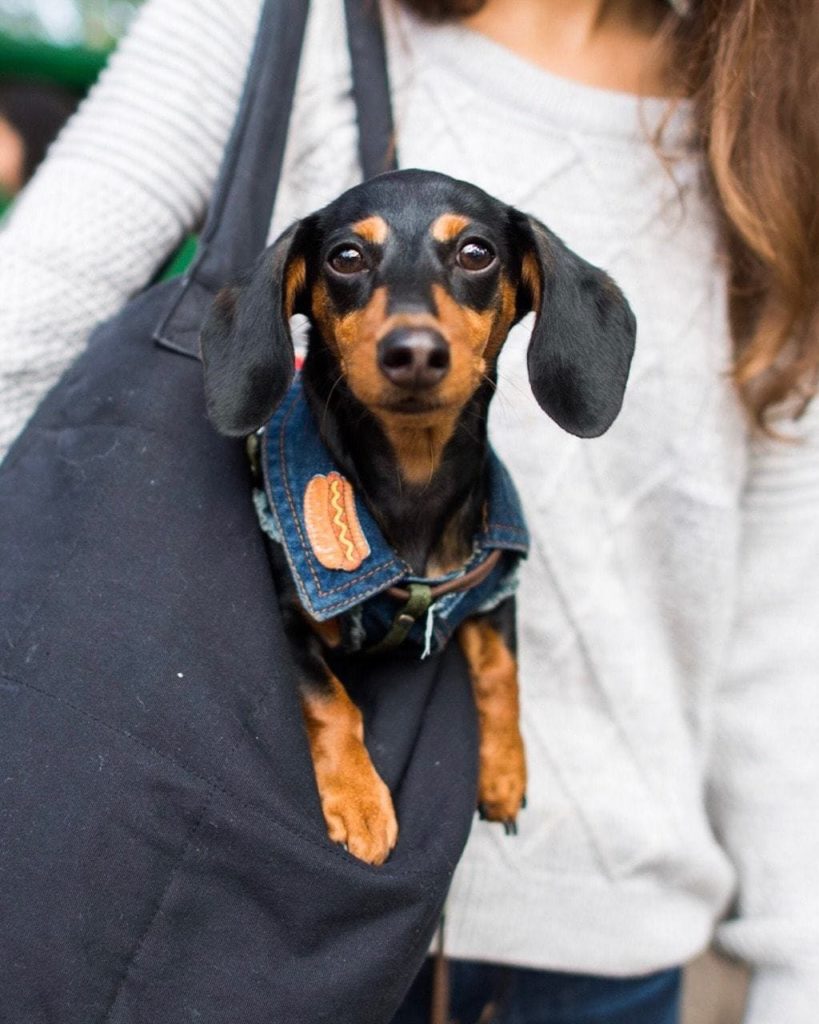
The Dogs Have Eyes
Almost all of our friends can agree that it’s essential to focus on their eyes. The old saying “the eyes are the windows of the soul” is still true with animals. You always want to make sure the eyes are clear. Avery calls them “soul shots.” Even if the animal is looking off to the side, make sure the eyes are in focus and visible. Avoid using the flash, if possible.
It can be challenging if your camera isn’t set right, so make sure you pick one point of focus in the camera’s system and lock in a fast shutter speed. Friedman recommends 1/160th of a second or faster.
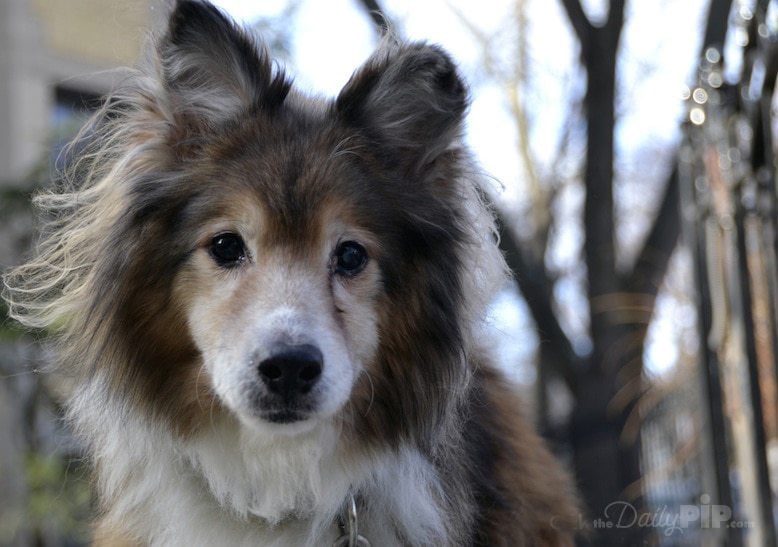
Avery likes having fuzzy, blurry backgrounds with the dog super sharp. Play around with the aperture setting on your camera – for shallow depth of field (more blurry background) use between f/2 and f/7.
Shift Gear
Having good gear can help you create better images, but you can make great ones with just your smartphone too. If you’re ready to purchase a nice camera, Wingfield suggests an entry-level DSLR paired with a Beginner portrait lens such as a 50mm f/1.8. The lens is most important. Using one with a large aperture (f/2.8 or lower) can give your images nice depth of field (sharp subject, blurry foreground).
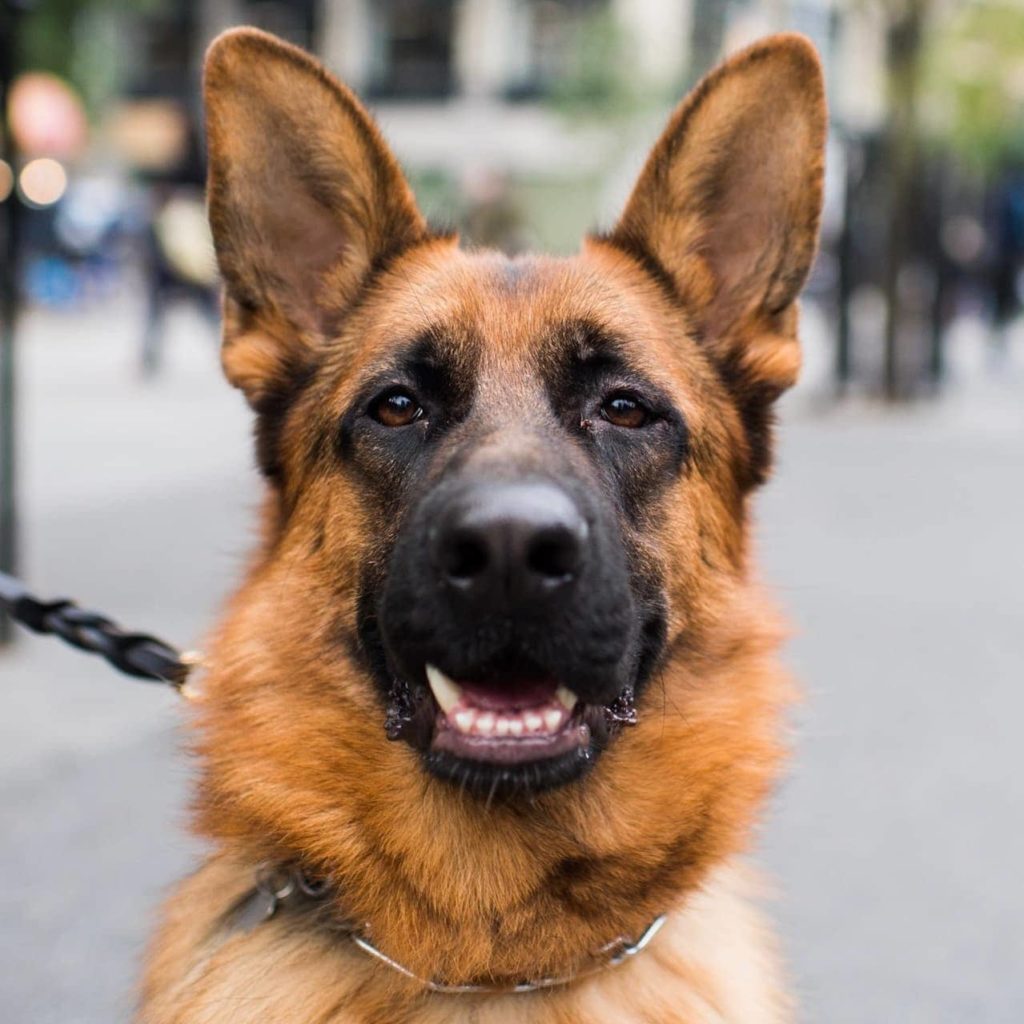
Extra Credit
The right composition can be the difference between a good photo and a great one. There are many different compositional styles from something as simple as the Rule of Thirds to more complex theories like the Golden Ratios. Wingfield suggests searching online to help you find your favorite style of composition.
Avery suggests paying attention to the color of the fur and avoiding super high-contrast shots. For example, a black dog will look better against a blue or wine-colored wall or blanket than a stark white background. A white or beige dog will look better on a cloudy day than a bright, sunny day.
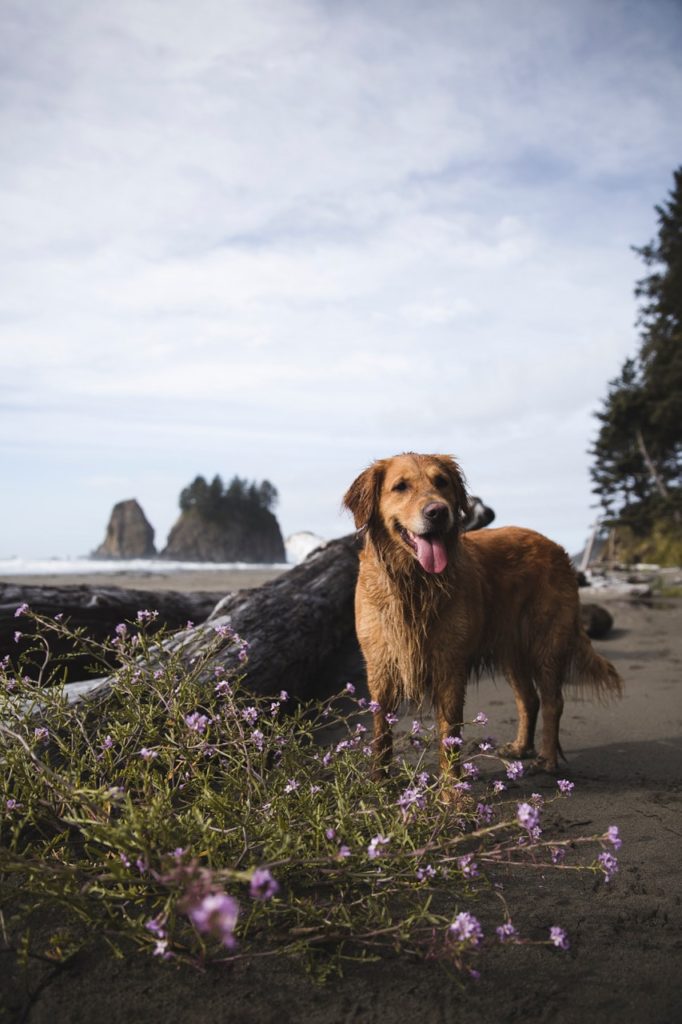
The More, the Merrier
“I think the most important part of taking photos of your dog is having fun while doing it. When taking photos of Millie, it’s important that both us and Millie are having a good time! The best photos are created when she has a big smile on her face,” Wingfield said.
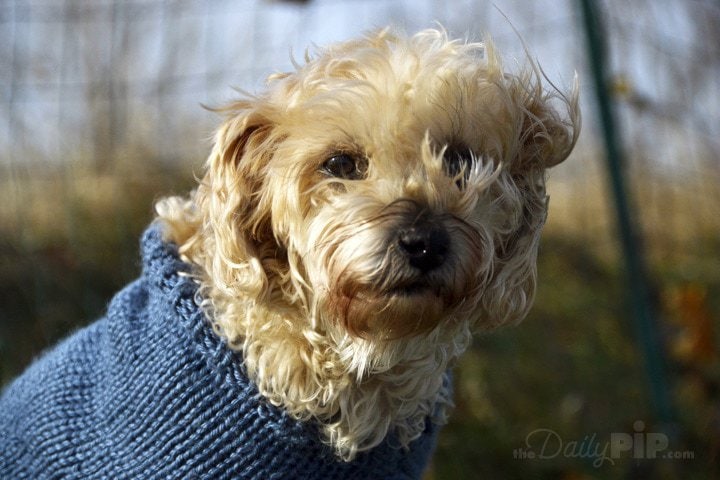
Practice these steps, and your dog portraits will show noticeable improvement. Your dog will also get used to the clicking of the camera and associate it with getting a treat. If you’re having trouble setting up your camera, practice tinkering with the settings while having a friend move a stuffed animal around in front of you until you’re ready for the real deal. Have fun, and share your pictures when you’re done.
Every day, we see so many dog photos getting printed on glass. Therefore, knowing how to effectively photograph them becomes extremely helpful. We’re so glad that some of our friends, who have become famous online for their amazing dog photos, were able to help us learn the best ways to improve our dog photography.
For more great tips, check out our guide to taking great photos of your pets.
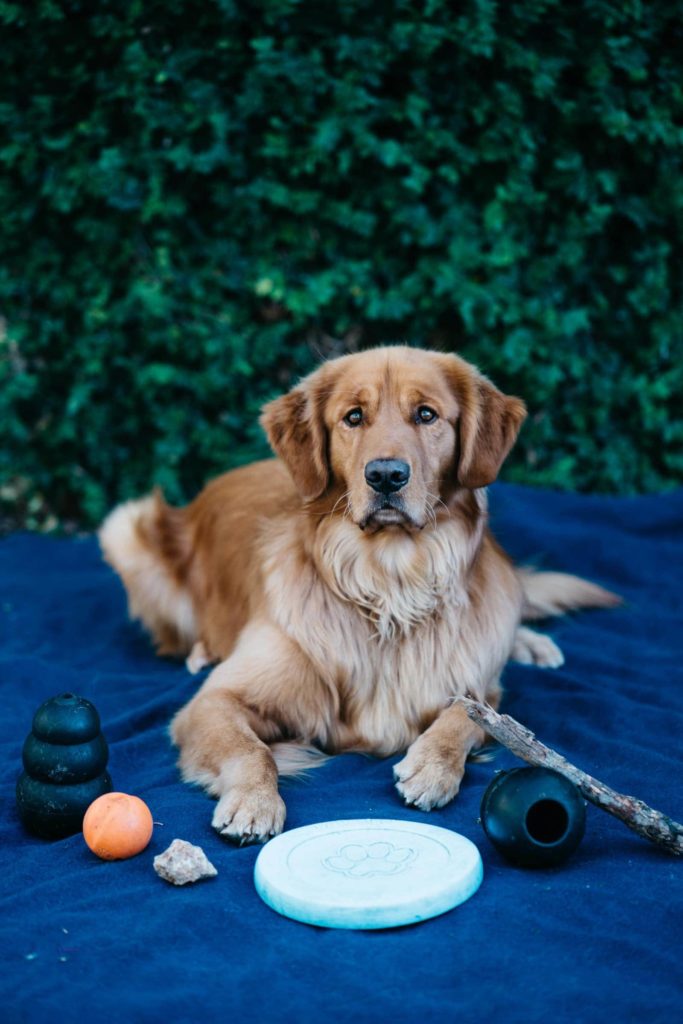
Share a photo of your favorite dog below!
A big thank you to our friends who shared their helpful advice and cute dog photos.
Elias Friedman runs The Dogist, a photo-documentary series of dogs around the world and New York Times bestselling book.
IG: @thedogist
John Wingfield is an outdoor adventure and lifestyle photographer from the Pacific Northwest.
IG: @milliethegolden
Kristin Avery is a Chicago-based writer and photographer with a lifelong passion for animal welfare. Her blog, The Daily Pip, is an award-winning, lifestyle pet blog providing resources, support, and humor for rescue families. She shares her home with a dog, a rabbit, two cats and sometimes a foster animal or two.
Sarah Lawrence went to school to be a teacher but once she and Hunter got married, Hunter’s passion for photography was contagious and so she decided to pick up a camera and join him.
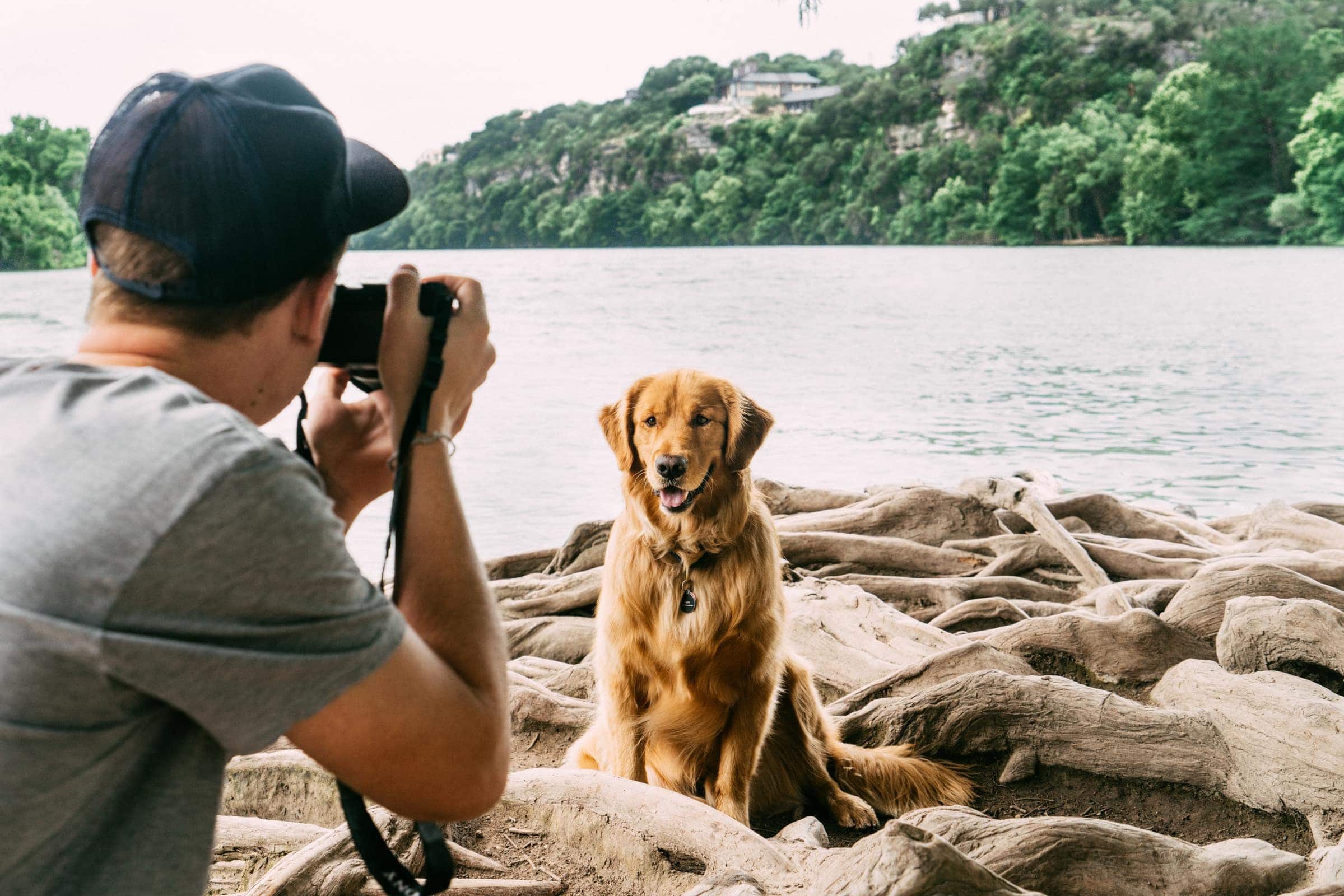


Comments